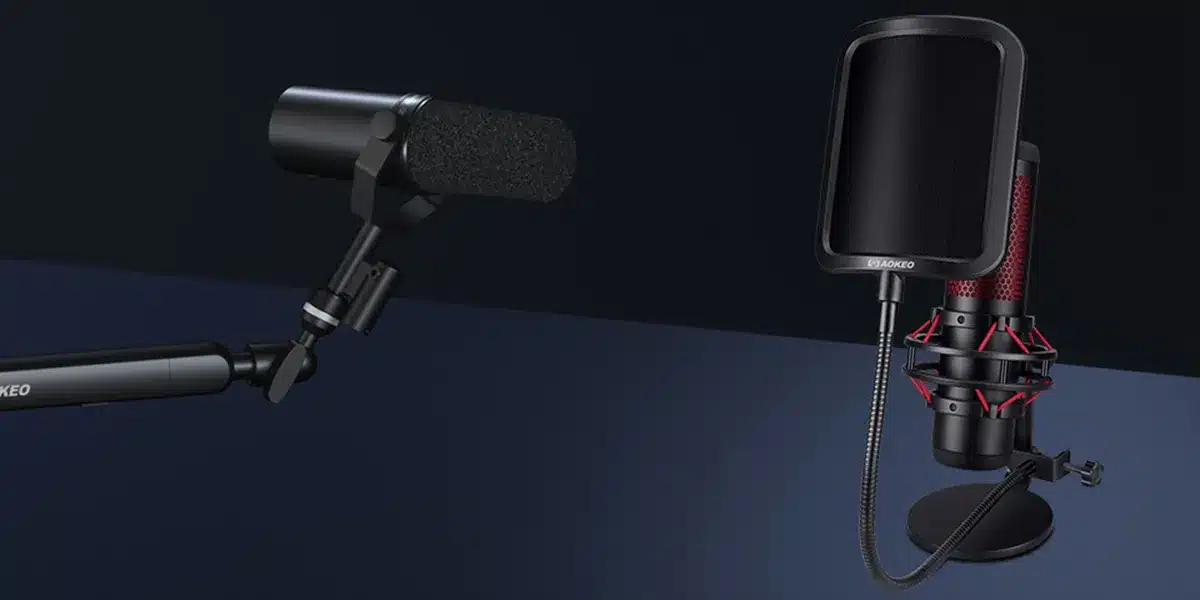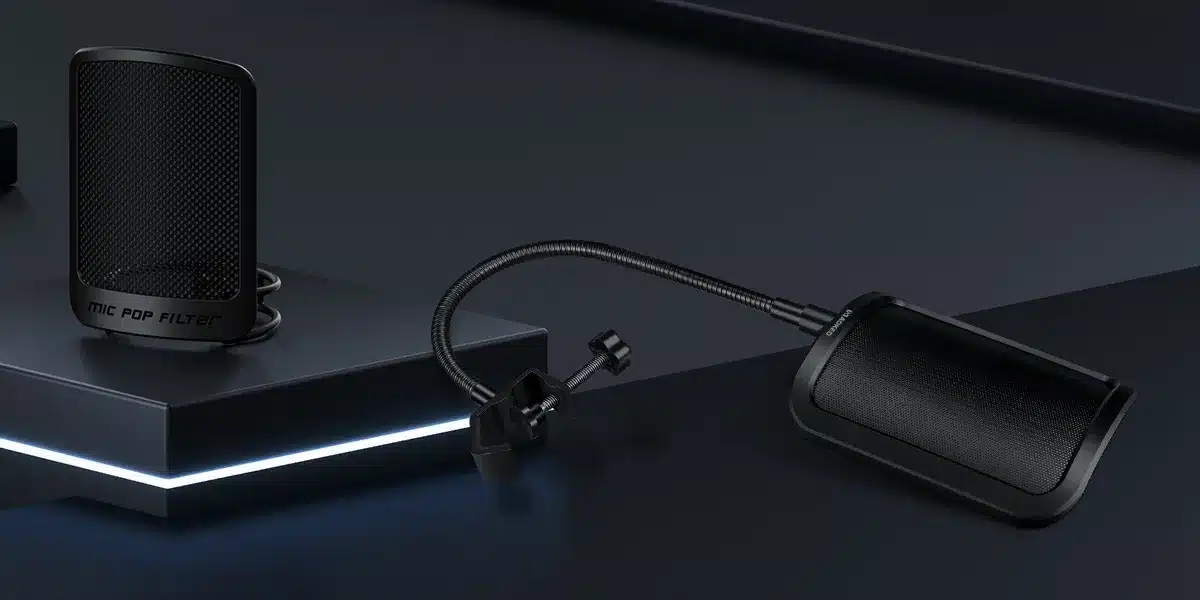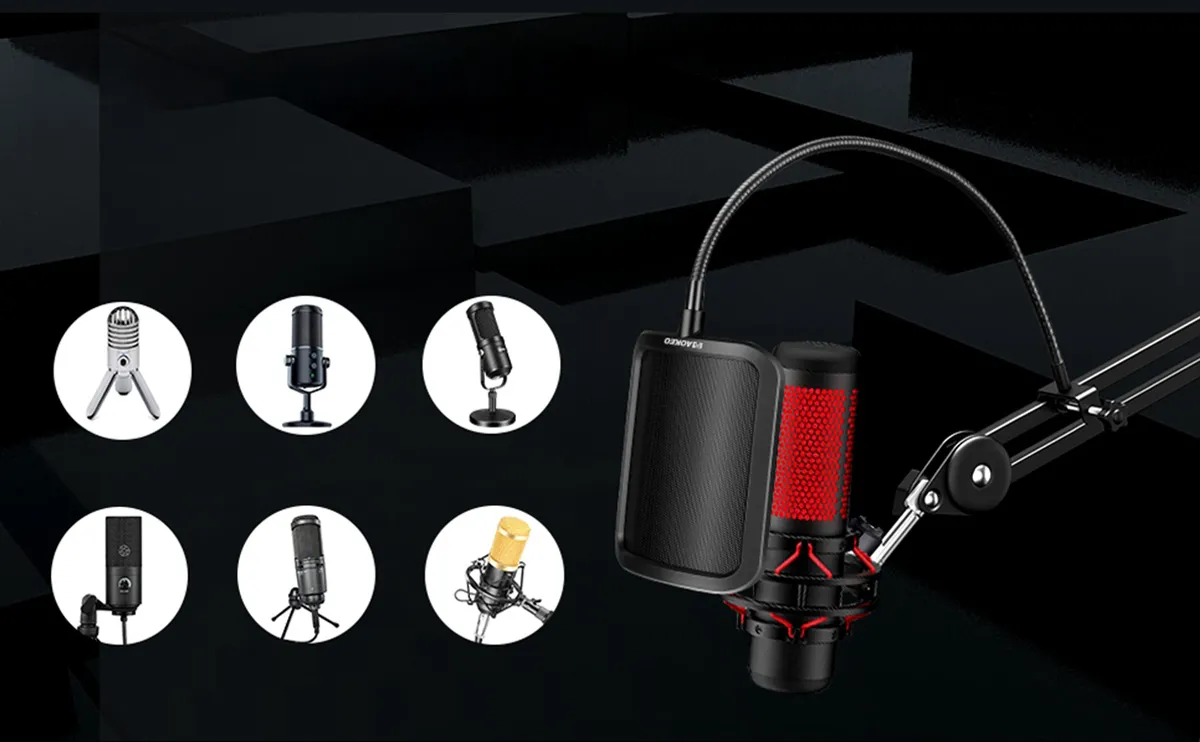5 Signs You Need a Microphone Pop Filter
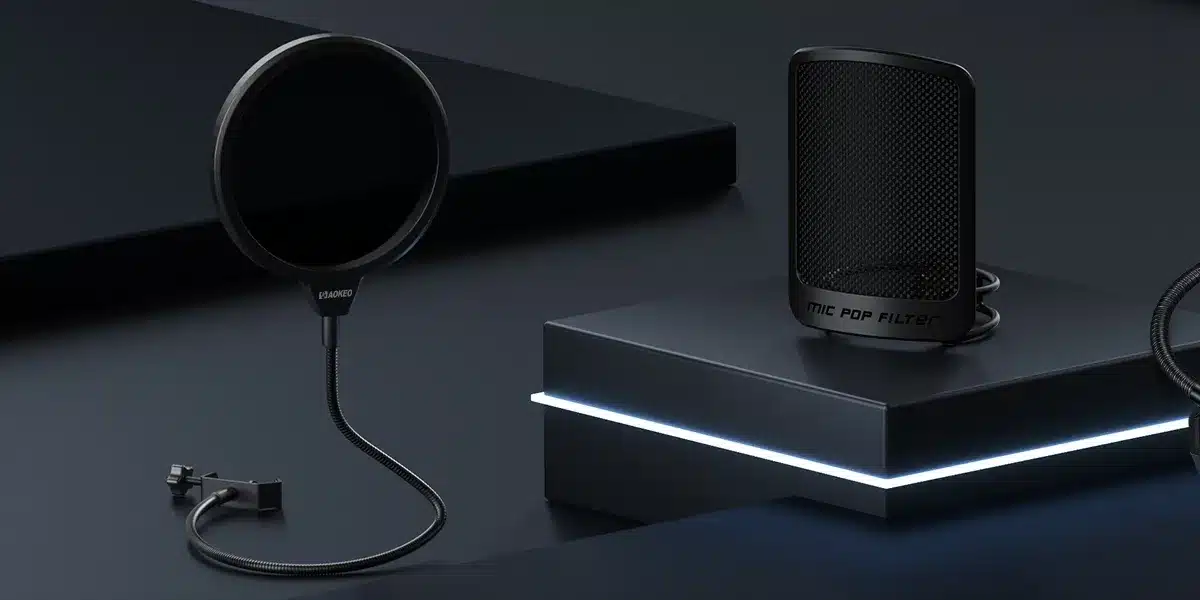
Whether you’re recording vocals, podcasts, or live streams, transparent audio quality is non-negotiable. But even the best condenser microphone can struggle with one sneaky enemy: plosives. (check more on : Do You Need a Pop Filter for Blue Yeti?) If you’re wondering whether a microphone pop filter is worth the investment, here are five signs you need one.
Plus tips to choose and use it effectively.
Table of Contents
When Should You Use a Microphone Pop Filter?
A pop filter acts as a shield between your mouth and the microphone. When you say strong sounds like “p,” “b,” or “t,” it blocks the fast air bursts that hit the microphone diaphragm.
Without a filter, this airflow causes distorted, low-frequency “thumps” or “pops” that can ruin an otherwise flawless recording.
It’s a must-have for:
- Vocal recordings: Singing, YouTube narrations, TikTok voiceovers, pro-level recordings with USB mics (Blue Yeti, etc.)
- Podcasters or Twitch streamers who speak close to the mic even when yelling during intense gaming moments.
- ASMR Artists: Protect binaural mics like 3Dio from moisture while maintaining whisper-close audio clarity.
- Remote Workers: Sound professional on Zoom/Teams calls without "popping Ps" distracting clients.
- Shure SM7B Users
- Protecting your microphonefrom saliva or dust
If your work relies on clear, professional audio, a pop filter isn’t optional, it’s a must-have.
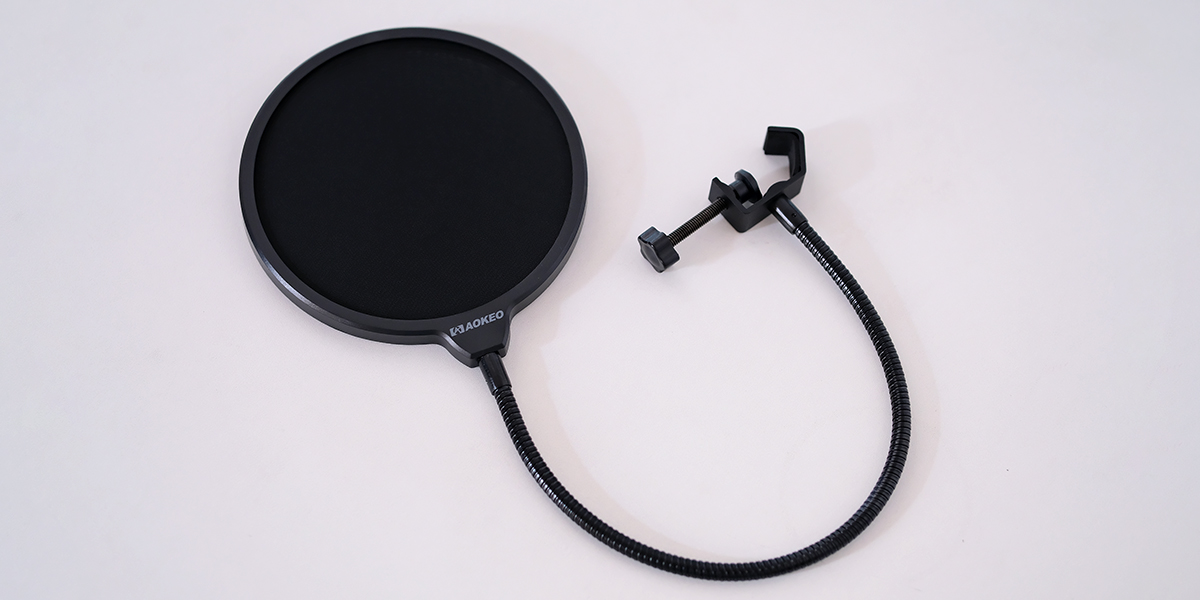
5 Signs You Need a Microphone Pop Filter
① You Hear "Popping" or "Thumping" Sounds
Do words like “perfect” or “baby” trigger distracting “pops” in your recordings? These plosives are a dead giveaway that airflow is hitting the mic too hard. The result? Low-frequency rumbles that distort vocal clarity and force you to waste hours editing waveforms in post-production.
② Your Recordings Sound Sloppy or Unprofessional
(Even If Your Content Is Brilliant)
Imagine spending hours scripting a podcast, rehearsing a vocal track, or editing a YouTube video - only to have listeners cringe at harsh “pops” or breathy distortions. Plosives don’t just disrupt your audio; they undermine your credibility.
A pop filter smooths out harsh sounds, giving your audio a studio-quality finish.
③ You’re Constantly Editing Out Noise
Fixing plosives in post-production is time-consuming. Prevent the problem upfront with a pop filter - your editing software will thank you.
④ You Notice Moisture on the Mic
Speaking closely can spray tiny droplets onto the microphone. A pop filter blocks saliva, keeping your gear clean and functional longer.
⑤ Your Mic Picks Up Every Breath or Lip Smack
A pop filter doesn’t just stop plosives - it also reduces breath sounds and mouth noises, creating cleaner, more natural audio.
How to Choose & Use a Microphone Pop Filter
Choosing the Right Microphone Pop Filter
- Material:
Nylon mesh filters are Affordable, lightweight, and ideal for home studios. Blocks most plosives and breath noise.
Metal Mesh: Durable, easy to clean, and better for heavy use (e.g., podcasts, radio). Resists warping over time.
RECOMMENDED: 3 Types of Microphone POP FILTER
-
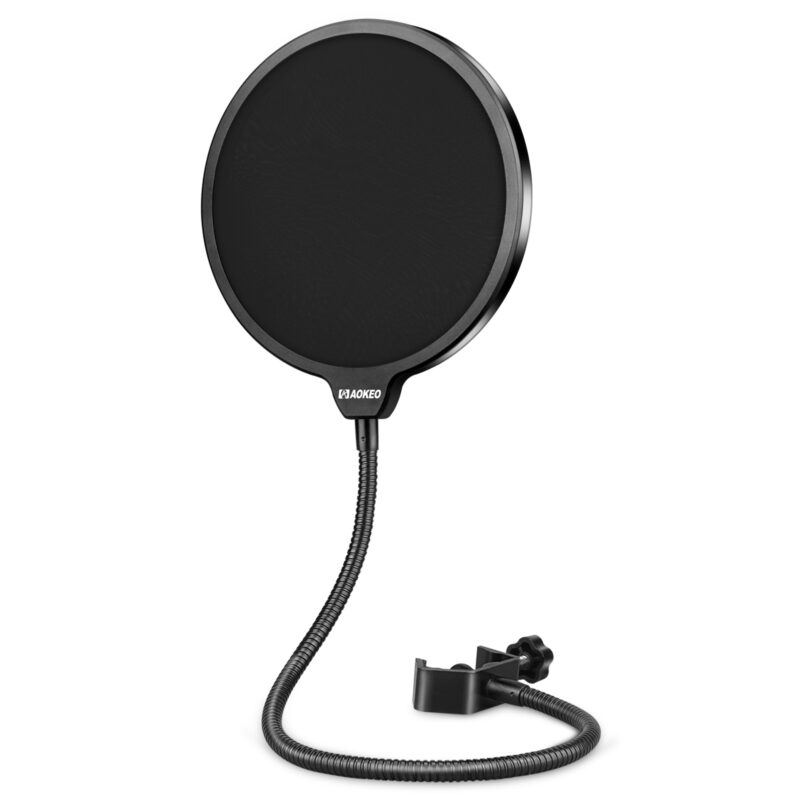 Aokeo O-Pop
Aokeo O-Pop
€19.99Original price was: €19.99.€12.99Current price is: €12.99. -
 Aokeo F-pop
Aokeo F-pop
€19.99Original price was: €19.99.€12.99Current price is: €12.99. -
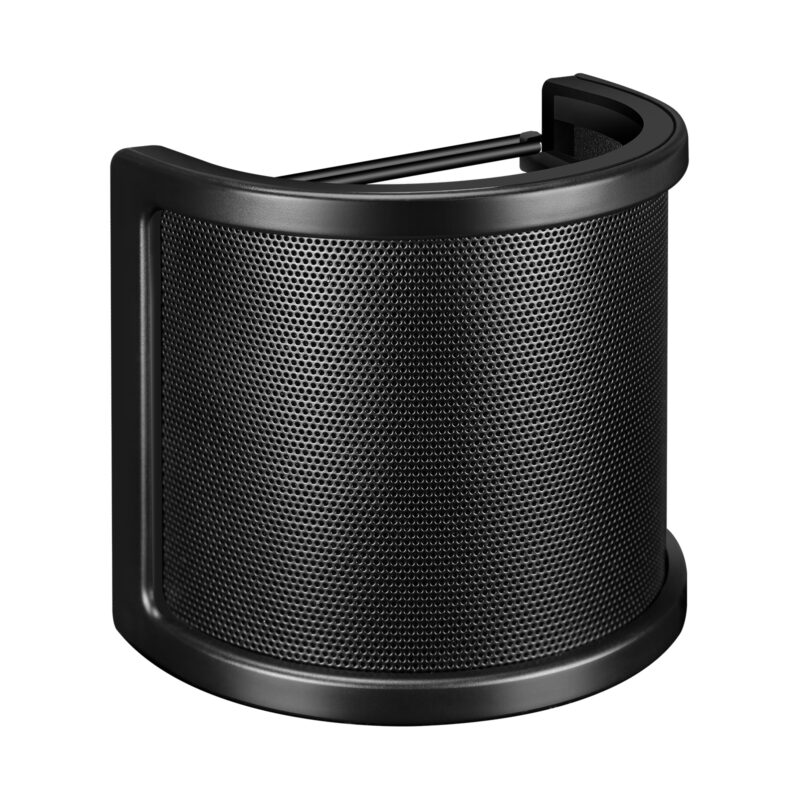 Aokeo U-pop
Aokeo U-pop
€15.99Original price was: €15.99.€9.99Current price is: €9.99.
- Size: Opt for 6” or larger filters to cover wide-diaphragm mics fully. Smaller filters (4”-5”) work for pencil mics or lavaliers.
- Mount: Look for adjustable clamps or gooseneck arms to position it easily.
- Microphone Compatibility: Check Your Mic’s Shape & Size。 Some mics (e.g., Shure SM7B, Blue Yeti) have bulky bodies or unique grilles. Ensure the pop filter’s clamp or mount fits securely without blocking controls or XLR ports.
Pro Tips for Use:
- Place the filter 2–4 inches away from the mic. Angle it slightly downward if breath sounds persist.
- Position it slightly off-center to avoid direct airflow.
- Maintenance: Clean nylon filters gently with a damp cloth; metal filters can be wiped down.
Final Note: Elevate Your Sound with Aokeo
Don’t let plosives sabotage your audio. Aokeo’s microphone pop filters blend durability, smart design, and affordability to tackle every "pop" and breath noise. Whether you’re a podcaster, musician, or content creator, it’s time to upgrade your setup - your audience’s ears will notice the difference.
Ready to say goodbye to plosives? Explore Aokeo’s range of pop filters and start recording like a pro.


